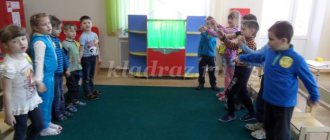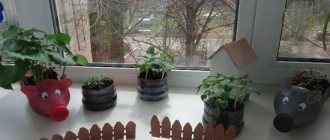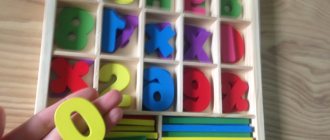Ways to dispose of waste
- Organization of landfills,
- recycling of waste,
- waste incineration.
Organizing landfills is the cheapest, but also short-sighted way to dispose of waste.
Toxic substances penetrate into underground waters, are dispersed by winds throughout the surrounding area and thereby cause damage to the environment.
As a result of rotting processes without air access, various gases are formed.
Fires regularly occur in landfills, releasing soot, phenol and other toxic substances into the atmosphere.
Recycling waste is the most resource-saving way. But there are a number of problems here:
- The first problem: the garbage needs to be sorted.
- The second problem: delivery of waste to the recycling site.
- The third problem: garbage cannot be used as a raw material for the production of high-quality products.
Incineration of waste is the most common and well-known method. BUT:
- Harmful or toxic chemical compounds are released in large quantities.
- not all garbage burns
- garbage contains a lot of moisture and difficult-to-burn materials.
We calculated the amount of garbage in our family:
| Amount of garbage per day | 500 g |
| Amount of garbage per month | –15kg |
| Amount of garbage per year | 180 kg |
| Amount of garbage per year per family member | 45 kg |
| Amount of garbage in the village, residents 870 people (year) | 39 tons 150 kg |
Garbage decomposition time
The process of waste decomposition occurs in different ways and can last from several days to tens of thousands of years. This is due to the composition of the product and the types of effects on it. Below are the average decay times of popular waste.
| Type of garbage | Decomposition time |
| Paper and cardboard | 3 months |
| Printing paper | 3 years |
| Wood, tin, shoes | 10 years |
| Iron | 20 years |
| Chewing gum | 30 years |
| Batteries | 100 years |
| Plastic bags | 200 years |
| Batteries | From 100 years |
| Tires | 200 years |
| Diapers | 500 years |
| Aluminum | 500 years |
| Glass and plastic | From 1000 years |
Ways to solve the problem of waste disposal
Gullies and holes are filled with construction waste.
First, such landfills are drained to prevent water from the landfill from leaking into underground aquifers.
Secondly, they are ventilated to prevent the formation of flammable and toxic gases.
Thirdly, the garbage is poured into the landfill so that its surface is flat.
Conclusion
The following results were obtained during the work:
- Literatures studied
- We found out that garbage is a global problem for humanity. Garbage dumps cause pollution of soil, air, and water, which leads to a deterioration in health and the emergence of a number of diseases among the population.
- Methods of dealing with waste are: organizing landfills, recycling waste, incineration. But they have positive and negative ways.
Types of waste
All waste in the city can be divided into 3 groups.
Namely:
- Household waste. Appear in the process of conducting household activities. Solid waste is not the main problem of humanity, but garbage, glass, and organic waste make up a significant share of the total percentage of litter.
- Industrial. According to statistics, they are considered the most dangerous. One of the global environmental problems is environmental pollution from industrial waste.
- Agricultural. This includes sawdust, livestock and crop waste. Reusable and recyclable.
Environmental project “We don’t need garbage - we are friends with nature”
Project passport
| Subject | "Clean Land" |
| View | Creative, practice-oriented, long-term |
| Author-developer | Teacher Zueva A.O. |
| Project participants | Teacher, children 6-7 years old, parents (legal representatives) |
| Target | Creating conditions to attract the attention of children and their parents to the problems of pollution in their native land. |
| Tasks |
|
| Expected results | The level of environmental awareness of children and their parents has been increased. Project participants demonstrate a responsible and humane attitude towards the environment and their native land. Cognitive activity and research skills have been developed. The level of knowledge about recycling and recycling of waste has increased. Parents of pupils are actively involved in joint activities with the kindergarten. |
| Regulatory framework | — Constitution of the Russian Federation; — Federal Law of December 29, 2012 No. 273-FZ “On Education in the Russian Federation”; — Order of the Ministry of Education and Science of Russia dated October 17, 2013 No. 1155 “On approval of the federal state educational standard for preschool education”; — Resolution of the Chief State Sanitary Doctor of the Russian Federation dated May 15, 2013 No. 26 “On approval of SanPiN” — Letter of the Ministry of Education of Russia dated May 17, 1995 No. 61/19-12 “On psychological and pedagogical requirements for games and toys in modern conditions” |
| Educational and methodological support | 1. Anichev K.V. Problems of the environment, energy and natural resources. – M.: “Progress”. - 1974. 2. Berlyant A. M. New schoolchild encyclopedia. Earth.- M.: “Rosman” - 2003 3. Gorkova L.G., Kochergina A.V., Obukhova L.A. Scenarios for classes on environmental education for preschoolers. M.: “Vako”, 2007. 4. Kondratyeva N.N. "We". Children's environmental education program, 2004. 5. Makhaneva M.D. Ecological development of children of preschool and primary school age. M.: Arkti, 2004. 6. Novikov Yu.V. Nature and Man, M.: “Enlightenment”, 1991. Voronkevich O.A. Welcome to ecology! St. Petersburg “Childhood-Press”, 2003. |
Relevance
It’s not clean where they clean,
and where they don’t litter.
Environmental education of preschoolers is the development in children of the ability to understand and love the world around them and treat it with care. The tense environmental situation around the globe requires that environmental education and training at all levels form students’ ideas about the world around them as an environment with obvious limits of resources and capabilities.
Interest in environmental issues is not accidental. It is due to the environmental crisis that worries humanity and its consequences, as well as the search for new ways out of it. Pollution of our environment is a major problem of our time. At the moment, a lot is known about it - a large number of scientific papers and books have been written, numerous studies have been conducted. But humanity has made very little progress in solving the problem. Pollution of nature still remains an important and pressing issue, the postponement of which can turn tragic.
It is from preschool age that it is necessary to instill in children the idea that a person needs an ecologically clean environment.
Classification of nature pollution
There are several classifications of natural pollution based on their source, direction, and other factors. So, the following types of environmental pollution are distinguished:
- Biological pollution – the source of pollution is living organisms, it can occur due to natural causes or as a result of anthropogenic activities.
- Physical pollution – leads to changes in the corresponding characteristics of the environment. Physical pollution includes thermal, radiation, noise and others.
- Chemical pollution is an increase in the content of substances or their penetration into the environment. Leads to a change in the normal chemical composition of resources.
- Mechanical pollution – pollution of the biosphere with garbage.
In reality, one type of pollution may be accompanied by another or several at once.
Garbage left on the ground harms more than just the soil. Its vapors enter the atmosphere, and the wind carries it to the water. Much of the ecological world suffers in this way.
To avoid environmental disaster, combating physical pollution must be a top priority. The problem must be solved at the international level, because nature has no state borders. To prevent pollution, it is necessary to impose sanctions on enterprises that discharge waste into the environment, and impose large fines for placing waste in the wrong place. Incentives to comply with environmental safety standards can also be achieved through financial methods. This approach has proven effective in some countries.
How can we fight the pollution of our native land within the framework of a kindergarten? In order to draw attention to the problem of pollution, it is necessary to carry out educational work with children, explain to them what harm various pollution causes to nature, and what needs to be done to reduce this harm.
Therefore, it was decided to draw up detailed long-term planning of work that will encourage young residents and their families to preserve the environment.
Forms of working with children:
— group (frontal);
— subgroup (small interest groups);
- individual.
Methods and techniques:
— visual (viewing illustrations, photos, presentations and educational educational films, virtual excursions to waste processing plants);
- verbal (conversation, story, reading fiction);
— gaming;
— practical (labor activity, artistic creativity).
Work principles:
- The principle of interconnection of all areas of work with preschoolers (integration).
- Systematic principle. Classes are conducted systematically, with mandatory reinforcement in independent activities.
- The principle of a person-centered approach.
- The principle of visibility. All submitted material is accompanied by the display of illustrations, viewing of presentations and videos.
- The principle of accessibility. Educational material is presented in a format understandable for preschoolers, all game materials on the topic being studied are within easy reach, at the children’s eye level.
Creation of RPPS for environmental education of children
The environmental corner of the group includes the following components:
— educational and visual aids (educational videos and cartoons, collections, models, paintings, panels, layouts, diramms);
- literary works (stories, poems, proverbs, riddles, fairy tales);
— games (didactic, object-based, board-printed, role-playing, verbal, active, creative);
The main feature of the ecological corner is the systematic filling with the results of children's activities: creative works, photo reports, albums, newspapers, crafts from recycled materials, etc.
The corner also contains a shelf for experimentation, which includes a card index of experiments for children and equipment for experimental activities. Experimental activities, as a form of work with children, contribute to the activation of the cognitive sphere of preschoolers.
In the theater corner, various masks (animals, insects, vegetables and fruits) and costumes are selected for acting out environmental fairy tales and dramatization games that contribute to the cognitive, environmental and aesthetic development of children, and the formation of their moral qualities.
No less important for environmental education is the developmental environment and group walking area, in the creation of which parents of pupils take an active part.
Project implementation stages
Stage 1 – preparatory:
- Studying the regulatory framework and methodological literature for the project.
- Defining the goals and objectives of the project.
- Studying literature on the topic.
- Selection of methodological literature.
- Discussion of the issue and questioning at the parent meeting.
- Preparation of a developmental environment (didactic and board games, card files of thematic physical exercises, experiments; selection of illustrations, fairy tales, magazines, encyclopedias)
- Development of a training system.
- Selection of literary works on the topic (poems, proverbs, sayings, riddles, fairy tales).
- Preparation of educational presentations, interactive games, cartoons on the topic of the project.
Stage 2 – main:
- Conducting educational sessions and conversations on the topic of the project;
- Reading educational literature, encyclopedias;
- Work to develop in children a caring attitude towards natural objects of their native land.
- Labor activity on the territory of the kindergarten and in nearby public gardens.
- Environmental actions.
- Development of original didactic games and manuals.
- Involvement of parents of students.
Stage 3 – final:
- Exhibition of children's creative works.
- Ecological holiday “We are friends with order.”
- Presentation of work results at a parent meeting, presentation of thanks to active participants in project activities.
- Speech at the final pedagogical council with the results of work on the project topic (presentation).
Long-term planning of work with children and parents of pupils
| Cognitive activity | Practical activities | Play activity | Reading fiction | ICT | Working with parents |
| June | |||||
| OOD “What do we know about environmental pollution” Conversation “Rules of behavior in nature” | Drawing prohibition environmental signs | D/i “Ecological Train” P/i “What will we collect in the bucket” S/r game “Forester” | Fairy tale “The Bunny and the Little Bear” by N.A. Ryzhova | Cartoon “Crocodile Gena and Cheburashka. Cleaning the river from garbage" | Community work day on the walking area with the creation of decor and game modules from rubber tires and plastic bottles |
| July | |||||
| OOD "Garbage undoubtedly requires division" | Modeling “Vase” from glass bottles using cereals | D/i "Garbage sorting" S/r game "At the factory" | The fairy tale “About the Khlamishche-Damned” | “Virtual excursion to a waste processing plant” | Folder “Second Life of Garbage” |
| August | |||||
| OOD "Green City" Research activity "Properties of plastic" | Dresses for dolls made from plastic bags, used balloons, and foil. | D/i “Tops-Roots” S/r game “Team of Nature Rescuers” | Fairy tale “No place for garbage” | Presentation “How a forester takes care of the forest” | Master class “Crafts from plastic dishes” |
| September | |||||
| OOD "Garbage sorting" TRIZ "How much garbage does a kindergarten throw out" | Collective work “Car Park” - toys made from plastic cups and matchboxes. | D/i “What’s extra” S/r game “We’re going on a hike” | Fairy tale “About Garbage Mud” | Presentation “The History of the Appearance of Garbage on Earth” | Active participation in waste paper collection |
| October | |||||
| OOD "Paper Properties" Creation of the "Green Patrol" team | Creation of the calendar “Our environmental affairs” | D/i “Yes - no” P/i “Bird without a nest” | "The Story of the Orange Garbage Truck" | Video “How paper is created” | Consultation “Environmental education of preschool children” |
| November | |||||
| OOD "Science of Glass" TRIZ "What happens if you bury garbage in the ground..." | Craft “Wall Clock” from plastic dishes. | Lotto “Time of Year” D/i “Sort out the trash” | The fairy tale “Masha and the Bear” by N.A. Ryzhova | Presentation “Red Book of the Moscow Region” | Drawing propaganda posters and wall newspapers |
| December | |||||
| OOD "Ecological professions" Research work "Paper recycling" | Collective drawing of a poster “We are given one for all – the fragile planet Earth” | D/i “What harms nature” S/r game “Trip to the sea”, plot “Cleaning up trash after ourselves” | "The Tale of the Battery" | Cartoon "Robocar Poli - Fuss around garbage" | Active participation in collecting batteries. Consultation “Raising a child begins with yourself” |
| January | |||||
| OOD "Smeshariki restore order" | Crafts "Feeders" from plastic bottles" | D/i “Field of unnecessary items” | “Why does the Earth have a green dress” by A. Lopatin | "Your Friend Bobby - Recycling" | Booklet “Waste Disposal Ways” |
| February | |||||
| OOD "Clean Water - Healthy Earth" TRIZ "How a person can save nature" | Crafts “Flower Pots” from plastic bottles. | Board game “Sorting into bins” S/r game “Park ecologist” | “A Mighty Blade of Grass” by M. Skrebtsov | Educational program “Galileo – About garbage” (excerpt) | Help in creating a winter town on the playground and clearing walking areas |
| March | |||||
| OOD "Hazardous waste" Quiz "Garbage is the enemy of nature" | Collective collage “March 21 – forest day, March 22 – water day” using foil, cotton wool, gouache. | D/i “Sort the garbage into the correct containers” | Fairy tale "The story of one drop" | Presentation film “Where does the garbage go” | Participation of parents in the campaign “Tree planting”, “Electronics recycling” |
| April | |||||
| OOD "Combustion of Various Materials" Event "Earth Day" | “Seedling pots” made from toilet paper rolls | Ecological crossword puzzle S/r game “Greeners” | Fairy tale “Second Life” by K.N. Lysova | Cartoon “Your Friend Bobby – Recycling Garbage” | Environmental campaign “Clean Land” - cleaning the Olgino microdistrict |
| May | |||||
| The final event is the environmental holiday “We are friends with order” | Collective production of a lapbook “Take care of nature” | D/i “Let’s clear the lake of garbage” Cut-out pictures “Planet Earth” | Fairy tale “No Place for Garbage” by A. Krivoshchekov | Interactive game “Clean Planet” | Parent meeting “Results of work on the implementation of the environmental project” (presentation of thanks) |
Literature
1. Gomarovich E.S. "What the city breathes." M.: Chemistry, 1990.
2. Zakhlebny A.N. “Book for reading on nature conservation” M.: Prosveshchenie, 1986.
3. Complex classes edited by Vasilyeva M.A., Gerbova V.V., Komarova T.S. - Volgograd Teacher 2012
4. Konopleva N.P. “The Second Life of Things”, Moscow: Education, 1993.
5. Nikolaeva S. N. “Young ecologist.” Environmental education program in kindergarten.
6. Protasov V.F. “Ecology, health and environmental protection in Russia”, M.: Finance and Statistics, 2001.
7. Rodionov S.K. etc. “What is garbage.” M.: Chemistry, 1991.
8. Solomennikova O.A. Environmental education in kindergarten - M.: Mozaika-Sintez, 2010.
9. Hoefling G. “Anxiety in 2000.” M.: Mysl, 1990.
10. Khotuntsev Yu. L. “Man, technology, environment.” M.: Sustainable World, 2001.
Interactive Resources
“A nursery rhyme about garbage” https://www.youtube.com/watch?v=wTcskGadMws
“Ask Albert”, series “Garbage and waste like a boomerang” https://www.youtube.com/watch?v=af4e1uzmjic
“About garbage” https://www.youtube.com/watch?v=hV2RLGHyZDk
"Your Friend Bobby" Episode 27 "Recycling"
“Robocar”, episode 41 “Vanity around garbage” https://www.youtube.com/watch?v=YUPmp8Eor6U
“Fixies” Series: “Paper”, “Ecotester”, “Batteries”, “What ecology teaches”, “Not trash at all” https://www.youtube.com/watch?v=1mCOnXHO0TE
“Where does the garbage go” https://www.youtube.com/watch?v=X9Fw28RlG7U
Project "House of Tires"
A smaller model of a house made from “tires”.
Houses made from car tires are the latest fashion. This is an affordable and environmentally friendly method of reusing worn-out tires. Tires filled with soil provide a very strong frame and foundation. They can also be used as bricks. Tire houses offer great architectural flexibility. That is, they allow you to create any structure with attractive design elements, such as wide rounded corners and spiral staircases.
Goals of this project:
- Create an architectural structure using car tires that are no longer fit for purpose.
- Build a reduced scale model.
What we need:
- computer with Internet access;
- color printer;
- digital camera;
- round flat objects resembling tires;
- regular office supplies (paper, cardboard, glue, etc.).
Progress of the experiment:
- Read reviews on the relevant topic.
- Learn all terms and research questions.
- Find and print images that relate to the topic.
- Take photographs during the experiment.
- After thoroughly researching this topic, consult with local architects and landscape designers. Find out the details of using tires as a building material.
- Create your own unique architectural design. This could be a building, a playground, landscaping item, or even furniture.
- Build a scale model of this structure using round, flat objects that resemble tires. Checkers, hockey pucks, toy parts are suitable, and this is only an incomplete list of possible options.
- If you decide to make a small object, such as a piece of furniture, use a real tire.
- State your observations in a detailed report.
- Prepare a science fair display and include photographs, diagrams, models.
Conclusion:
Think about what other unnecessary things you can use when building a house.
Project “Use of recycled materials for clothing production”
Reality television shows such as Project Runway (as well as artists such as Lady Gaga) have greatly expanded the understanding of fashion design. Project Runway participants create comfortable things using the most unimaginable materials, such as newspapers, burlap, metal products, car parts, giving old things a second life. Moreover, many leading fashion designers have become interested in environmentally friendly materials. There are now numerous fashion events around the world dedicated to creating clothes from recycled materials. This project will help you discover the fashion designer within you.
Project goals:
- Experiment with unusual clothing design ideas.
- Promote the development of environmentally friendly products.
What we need:
- computer with Internet access;
- color printer;
- digital camera;
- common office supplies (such as paper, pens, cardboard, glue, etc.);
- clean, lightweight materials suitable for recycling.
Progress of the experiment:
- Find and print photos of models wearing items made from recycled materials, as well as any other fashion-related images that interest you.
- Collect recycled materials that suit your needs. You can take plastic bottles, aluminum cans, toys, lamp shades, umbrellas, anything! Make the most of your imagination. Keep in mind that things should be comfortable, washable, well-fitted, lightweight, warm enough, durable and pleasing to the eye. In addition, a fashion consultant and one of the TV presenters of Project Runway says that these clothes should be comfortable to get in and out of the car. However, it all depends on you, because you are a designer.
- If you already know how to sew, create 3 or 4 simple identical garments using regular stretch cotton fabric. If you don't sew, grab 3 or 4 white cotton T-shirts.
- Sketch your ideas. Make color sketches.
- Cut out the selected materials. Give them the required shape.
- Sew (or securely attach in some other way) all the parts, giving them the desired shape.
- Let the models try on the clothes, make the necessary adjustments to fit the items to the figure.
- Take a photo of each item of clothing.
- Present your ideas in a detailed report.
- Showcase the results of your live fashion project during a science fair.
- Include interesting photos taken while working on the project.
Conclusion:
What determines the quality of clothing? What recycled materials can be used to create wearable clothing?
Violator tracking
As an example of creating a favorable environmental atmosphere in Russian cities, Dmitry Davydov suggests turning to the experience of Singapore, which is currently one of the greenest megacities on the planet. He recalls that back in 1965 the island was “a model of decline, destruction and neglect” and the current environmental well-being was achieved through the implementation of almost draconian measures.
Indeed, in addition to restoring acidified soils, establishing a drainage and irrigation system, importing eight thousand varieties of plants to the island and planting millions of trees and shrubs, it was necessary to change the mentality of its inhabitants. Therefore, in order to fight for cleanliness, according to the authorities, for two decades, police officers stationed at every intersection personally monitored the behavior of citizens. And for every violation, be it spitting or walking cattle on the city streets, they were fined. As a result, thanks to a clear policy of the authorities and a change in the self-awareness of citizens in Singapore, it was possible to create today's favorable environmental atmosphere.
Currently in Russia, according to Dmitry Davydov, with the availability of modern technologies, it is possible to restore order much faster. He proposes to track violators using professional video cameras, installed not at public expense, but by entrepreneurs who will receive half the amount of fines imposed on violators.
In addition, the enthusiastic entrepreneur is confident that citizens of the country, the so-called authorized applicants, can play an important role here, recording violations and also receiving 50 percent of the amount of the fine received by the state for this.
Thus, Davydov believes, “we will receive a system of effective mass control over cleanliness, which will help restore complete order in a maximum of two years.” He proposes launching a pilot project in Sochi, and after receiving positive results, expanding this experience throughout the country.
Photo: Maxim Grigoriev / TASS
How can we solve the garbage problem?
All countries are addressing the environmental problem of garbage. Several effective methods have been developed for this.
Separate waste collection and sorting
Separate waste collection has been officially introduced in many European countries. Residents are accustomed to throwing away organic waste in one place, and throwing away plastic, glass, batteries and accumulators separately, taking them to special collection points.
All this helped to establish a state waste sorting system. Garbage is not accumulated in a single heap at landfills, but is divided into categories and then recycled.
Failure of landfill or incineration
Incineration or landfilling are the most unsafe methods of waste disposal. Instead, European countries have adopted recycling.
If the waste can be reused, it is sent to special factories.
Recycling
Recycling is the solution to litter and overconsumption. Plastic or glass can be used to make new containers, and rubber is used as a covering for stadiums.
Waste management and recycling scheme.
The waste paper recycling process is well established. It is used to make new paper and cardboard.
High fines
Prevention of the formation of spontaneous landfills is an appropriate punishment.
Sanctions in other countries:
- Austria - 7 thousand rubles;
- Australia - 400 thousand rubles;
- Ireland - 400 thousand rubles and 12 months in prison;
- Great Britain - 7 thousand rubles;
- Switzerland - 20 thousand rubles;
- Singapore - 40 thousand rubles and imprisonment;
- Japan - 5 million rubles and 5 years in prison.
Harmfulness of waste to the environment
The problem of waste is not only the space occupied, but also the pollution of the environment. Let's look at the harm that garbage causes to nature.
Hazardous substances
Waste stored in landfills gradually decomposes when exposed to direct sunlight.
During this decomposition process, the following accumulates in landfills:
- methane;
- carbon dioxide;
- filtrate.
Toxic compounds enter the air, water and soil. They cause suffocation, problems with the respiratory system, and lead to chronic diseases.
Long decomposition period
Plastic, glass, car batteries and tires take a long time to decompose. Such garbage can lie in landfills for thousands of years, occupying useful areas.
At the same time, it is impossible to simply burn inorganic waste - in this case, toxic combustion products enter the air.
Harm to animals and people
Garbage on the ground is dangerous for both people and animals. Toxic compounds enter food and water, causing serious poisoning. Birds often get entangled in plastic bags and are unable to fly.
It is not uncommon to see birds entangled in discarded fishing nets.
In addition, spontaneous landfills are dangerous for small children, who often pick up garbage from the ground.
Large clogged areas
Garbage in nature is found in almost all forests near large cities. Unauthorized dumps are found in parks, courtyards, and residential complexes.
The areas occupied by official testing grounds can be compared with the size of the Moscow or Leningrad region. This place could be used rationally.
Pollution of the planet's waters
Most of the waste ends up in the Pacific Ocean, where it remains for hundreds of years. The phenomenon of “garbage islands” is not at all uncommon.
There are trillions of tons of plastic floating in the water, causing irreparable harm to the environment.
A huge garbage patch right in the middle of the ocean.
Garbage washes up on the islands, killing fish and algae.
Greenhouse effect
As waste decomposes, it releases large amounts of carbon monoxide and methane. They make a significant contribution to the accumulation of the greenhouse effect. Because of this, the temperature of the earth increases every year.
A simplified diagram of the greenhouse effect phenomenon.
The consequence of this is global warming.








